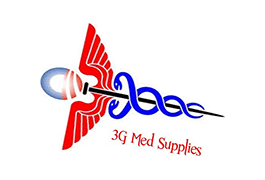13 August, 2014
 Tips on how to obtain funding
Tips on how to obtain funding
When it comes to innovation, facilities often have a strong and natural aversion to the perceived risk of investing in new approaches. But sometimes the risks associated with trying to improve the status quo outweigh the risks of innovation. If solutions identified require more human effort in an already strained environment, if they add complexity, or continued reliance on primitive work methods, there’s a risk that any improvements achieved will not be sustainable.
Today, there are easy-to-use technology solutions to reduce the risk of human error, increase productivity, and provide consistent, standardized and trustworthy results. But what is the best way to put the case to start the innovation journey?
A business case for innovation will help you to:
- Illustrate the issues and justify the risk of investing in innovation
- Convince management and other stakeholders to endorse the idea
- Logically think through your proposal, especially the wider impact on patients and the facility.
An initial business case should be short, clear and easy to understand. Its purpose is to get you through initial acceptance that there is an issue, and that it is worth investigating a better approach.
Here are the steps for developing an initial innovation business case that will open doors:
-
Define the core issue the innovation is addressing: What is the presenting problem? For instance, if the issue is related to wound assessment practices, the organization may be exposed to the risk of hospital-acquired pressure ulcers; it may need better quality management systems to prove wound outcomes; it may not have robust documentation to demonstrate evidence of care. Multidisciplinary team communication may need improvement; there may be too much dependence on non-specialist staff; or the organization may wish to leverage the knowledge of wound specialists. Wound logistics may be too complex or wound-related productivity may be low. The organization may wish to open up a new wound clinic or establish a wound telehealth service. There may be a combination of factors.
-
Estimate the costs of the issue: This article offers some prompts to help identify areas where change may prove worthwhile, and shows how direct, risk and opportunity costs all contribute to the case for innovation.
-
Define metrics that will indicate improvement: Based on the answers above, what aspects of the issue must the innovation address? How will you know when a proposed innovation is working?
-
Identify the scope of innovation: Would the solution combine a technology with a change in processes? Or does the organization simply need to equip practitioners with better tools? Are changes in work practices required?
-
Determine how to implement the innovation appropriately, perhaps starting with a single point of care device, or a pilot in a single facility. This will help clarify your entry costs and implementation costs over time.
-
Calculate the return on investment: When the improvements are realized, what will be the return to the organization? How will the organization be better off? How would this translate financially? How will patient outcomes be impacted? How long should it take for a return to materialize?
A basic business case document would succinctly answer these questions for funding decision-makers needing more information to set priorities. This could open the door to a more in-depth investigation into the value of a particular innovation investment that could contribute to better clinical practices, and lay a foundation for better outcomes for patients.

 Tips on how to obtain funding
Tips on how to obtain funding 



